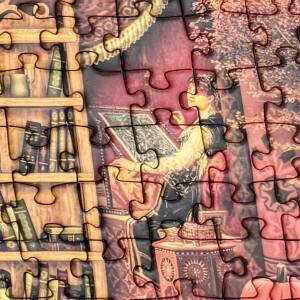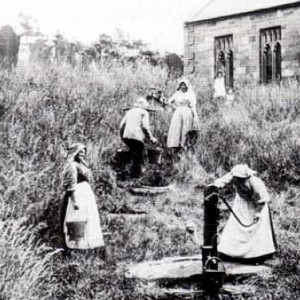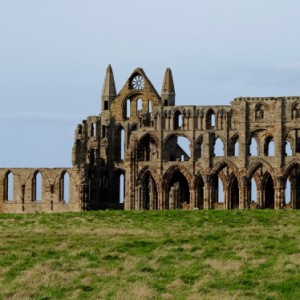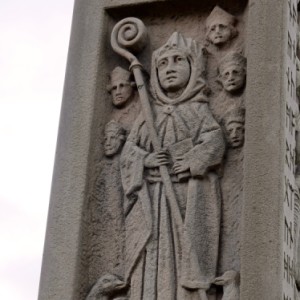Hild
I wanted to visit one more holy well during February and there was one I kept coming across and was interested in. It was quite a distance in North Yorkshire and I didn’t really want to go on my own, so I said the magic words – Whitby, Magpie Café – and suddenly there were two of us going well- hunting!
In the churchyard of St Hilda’s Church, in the village of Hinderwell near Whitby, there is St Hilda’s Well. It is reached by a flight of well-worn steps set into a grassy mound. The first extra picture is an old one showing the well being used when it had a pump. In 1912, during some restoration work, the pump was removed and the current sandstone structure was built. Crystal clear water flows from a chamber behind and into the small trough in front. It is a charming place to be.
St Hilda, or Hild, was a remarkable woman and I really want to find out more about her. She was born in 614 and died in 680. Of noble birth, related to royalty, she was converted to Christianity at the same time that King Edwin took the momentous step. Eventually Hild became a nun and was soon appointed second abbess of Hartlepool. Then in 657 she became the founding abbess of a new monastery in Whitby, then known as Streonshalh. She was highly thought of and encouraged many people, including Caedmon, the first named poet in the English language. She presided over the Synod of Whitby, which made many decisions, including setting the dates of Easter. It is thought that Hild used the area of the spring at Hinderwell as a retreat from Abbey life and later a church was built and dedicated to her.
This first monastery was destroyed by the Vikings in 867 and eventually a new Abbey was established in the same place, the ruins of which (see second extra) are what hundreds of people climb 199 steps to see. I have climbed those steps many times, from being a child, but today we cheated and drove round to the car park. Neither did we pay the £7.50 to go inside the ruins, but we did walk round to the church to find the Caedmon Cross, which stands prominently overlooking the River Esk where it meets the North Sea. A splendid position on such a lovely day. On the cross is a carved panel of Abbess Hilda – see third extra.
There is much more that could be said about St Hilda, but this is too long already, so I will stop.
Just to say that the fish and chips were good and it was lovely to be back in Yorkshire again.




Comments
Sign in or get an account to comment.


